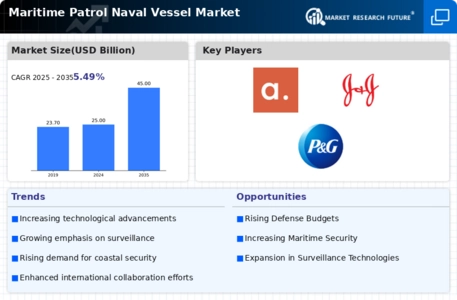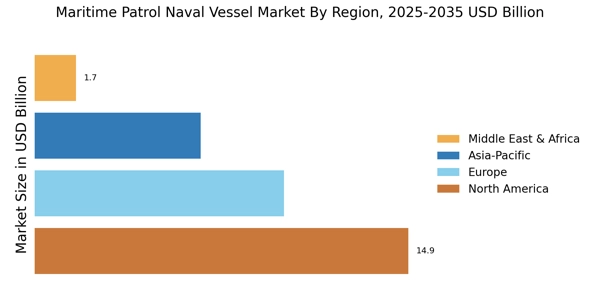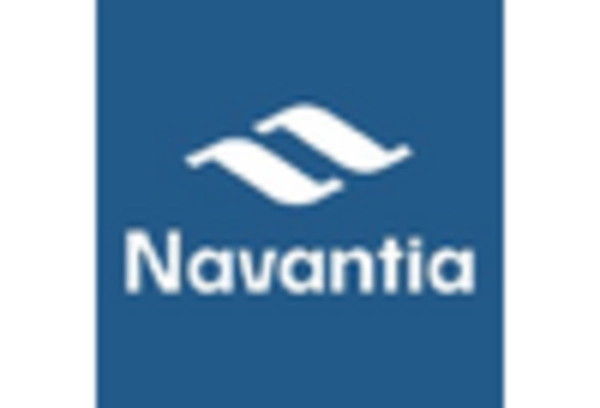Rising Defense Budgets
The Maritime Patrol Naval Vessel Market is benefiting from rising defense budgets across various nations. Governments are prioritizing maritime security as a critical component of national defense strategies. In recent years, several countries have announced substantial increases in their defense spending, with a notable focus on enhancing naval capabilities. For example, defense budgets in regions with significant maritime interests have seen increases of up to 10% annually. This trend is likely to continue, as nations recognize the strategic importance of maintaining a capable maritime force, thereby driving demand for new patrol vessels and upgrades to existing fleets.
Increasing Maritime Security Threats
The Maritime Patrol Naval Vessel Market is experiencing a surge in demand due to escalating maritime security threats. Piracy, smuggling, and illegal fishing have become pressing concerns for many nations. As a result, governments are investing heavily in maritime patrol capabilities to safeguard their territorial waters. The market is projected to grow at a compound annual growth rate of approximately 4.5% over the next five years, driven by the need for enhanced surveillance and response capabilities. Countries are increasingly recognizing the importance of maintaining a robust maritime presence to deter potential threats, which is likely to further stimulate the demand for advanced patrol vessels.
Technological Innovations in Vessel Design
Technological advancements are reshaping the Maritime Patrol Naval Vessel Market, with innovations in vessel design and capabilities. The integration of cutting-edge technologies such as unmanned systems, advanced radar, and communication systems is enhancing operational efficiency and effectiveness. For instance, the introduction of hybrid propulsion systems is not only improving fuel efficiency but also reducing the environmental impact of patrol operations. As nations seek to modernize their fleets, the market is expected to witness a shift towards vessels equipped with state-of-the-art technologies, potentially increasing the overall market value significantly in the coming years.
International Collaboration and Partnerships
The Maritime Patrol Naval Vessel Market is witnessing a trend towards international collaboration and partnerships among nations. Joint exercises and shared resources are becoming increasingly common as countries seek to enhance their maritime security capabilities collectively. Such collaborations often lead to shared procurement initiatives, which can reduce costs and improve operational interoperability. Additionally, partnerships with defense contractors for technology sharing and co-development of vessels are likely to emerge, fostering innovation and efficiency in the market. This collaborative approach may significantly influence the dynamics of the maritime patrol vessel market in the years to come.
Environmental Regulations and Sustainability Goals
The Maritime Patrol Naval Vessel Market is increasingly influenced by environmental regulations and sustainability goals. As nations commit to reducing their carbon footprints, there is a growing emphasis on developing eco-friendly patrol vessels. This includes the adoption of alternative fuels and energy-efficient technologies. The market is likely to see a shift towards vessels that comply with stringent environmental standards, which may involve significant investments in research and development. Furthermore, the push for sustainability could lead to the emergence of new market players focused on innovative, green technologies, thereby reshaping the competitive landscape of the maritime patrol vessel market.


















Leave a Comment